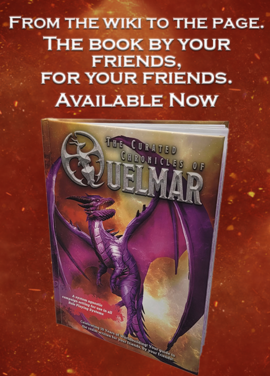
A half-orc is a fictional character often found in fantasy literature, games, and media. They are typically depicted as a humanoid hybrid of an orc and another race, such as a human or an elf. Half-orcs often possess physical characteristics of both races, such as prominent teeth, strong jaws, and coarse hair.
In many fantasy worlds, half-orcs face discrimination and prejudice from other races due to their heritage. They may struggle to find acceptance and a place in society, leading some to become outcasts or turn to a life of violence.
Despite their difficult upbringing, half-orcs can also possess unique strengths and abilities, such as exceptional physical strength and endurance, which make them formidable warriors.
Half-orcs are a fictional humanoid hybrid race that commonly appear in fantasy literature, role-playing games, and other media. They are often portrayed as being the result of a union between an orc and another humanoid species, such as a human or an elf.
Physical Characteristics: Half-orcs typically have a mix of physical traits from both their orc and non-orc parent. These traits may include a prominent brow, a square jaw, pointed ears, coarse hair, and tusks. They are generally taller and more muscular than humans but are not as tall or massive as pureblood orcs. Half-orcs also tend to have green or grayish skin, which can vary in tone depending on their ancestry.
Personality and Culture: Half-orcs often struggle to find acceptance in society due to their mixed heritage, and many are raised in harsh or violent environments. As a result, they tend to be rough around the edges and may have a brash, aggressive demeanor. However, they can also be fiercely loyal to those they consider allies, and some half-orcs value honor and courage above all else.
In some fantasy settings, half-orcs may have their own distinct culture, with customs and traditions that blend aspects of orc and human (or other) cultures. They may also be integrated into human or orc society, though they may face prejudice from both.
Abilities: Half-orcs often possess superior physical abilities, including strength, endurance, and resilience. They may also have heightened senses and reflexes, which make them formidable fighters. However, they may be slower to learn magical abilities or other more subtle skills.
Role-playing: In role-playing games, half-orcs are a popular choice for players who want to create a character with a unique backstory and set of abilities. Many game systems provide players with a range of options for customizing their half-orc characters, including different physical attributes, backgrounds, and skills.
Overall, half-orcs are a fascinating and complex fantasy race that offers plenty of opportunities for storytelling and role-playing. Whether they are portrayed as outcasts, warriors, or something in between, they are sure to add depth and richness to any fantasy world.
Half-orcs are medium sized humanoids that are descended from orcs and humans. They are typically half human and are a little stronger and taller than their human parent but their appearances can vary wildly. In Quelmar, they are considered New World Crossbreeds, since they were not recognized before 0 BR. They often find themselves as heavy lifters, soldiers, or fighters in general due to their innate strength. Having the combined physical power of their orcish ancestors with the agility of their human ones, half-orcs were formidable individuals. Though they were often shunned in both human and orcish society for different reasons, half-orcs have proven themselves from time to time as worthy heroes and dangerous villains. Their existence implied an interesting back story that most would not like to dwell on.
Appearance[edit | edit source]
Half-orcs can look more like their human parent or more like their orc parent. Orcish genetics can vary as they are passed down. Typically, half-orcs have slightly small tusks on their bottom teeth, green or gray-tinted skin, and dark hair. A half-orc individual can take after either or both of their parents, so no half-orc looks the same, even if they're full siblings. Scars are considered very normal amongst orcs and thus half-orcs often wear scars with pride.
Half-orcs were, on average, somewhere from 5 feet and 9 inches to 6 feet and 4 inches (1.8 to 1.9 meters) in height and usually weighed around 155 to 225 pounds (70.3 to 102 kilograms). making them a little taller and stronger than humans on average. Most half-orcs had grayish skin, jutting jaws, prominent teeth, a sloping forehead, and coarse body hair, which caused them to stand out from their human brethren, though their canines were noticeably smaller than a full-blooded orc’s tusks. Half-orcs as such appeared bestial to humans, though amongst orcs they were considered human-like physically. Half-orc hair was most often black, though it grayed very quickly with age. In general, half-orcs did not live as long as humans, maturing by their sixteenth year and often dying before their sixtieth.
Half-orcs that have lived amongst orcs have often picked up the common orcish tradition of ritual scarring. Half-orcs with such a background did not look upon scars as marks of shame or as unattractive blemishes, but rather as marks of pride that demonstrate their skill and bravery in battle. On occasion, however, scars were used for a darker purpose, with orcs marking half-orc slaves with scars in the same manner a rancher might brand cattle.
Half-orcs had shorter lifespans than humans, reaching maturity slightly earlier and rarely living longer than seventy-five years.
Personality[edit | edit source]
The personality of a half-orc would depend on how they were raised and who they were raised by. Their unique existence is a personality trait most times by itself. Half-orcs do typically mix the tenacity and adaptability from their human side with impatience and free-spiritedness from their orcish side. Like humans, half-orcs were quick to action, tenacious and bold, and possessed an adaptability that was unusual among most races. This was useful to the race given that they were considered outsiders just about everywhere; they had the ability to thrive in unwelcome or unusual locations, which was a necessity for a half-orc’s welfare.
From their orcish blood, half-orcs typically took less desirable qualities, which added to the discomfort others often felt around them. Few half-orcs had the patience for the etiquette or protocol that civilization has often imposed and were far from quiet about their opinions on the subject. As a result, half-orcs were often perceived as uncouth savages, a reputation accentuated by the orcish love of physical pleasures such as eating, drinking, or dancing. Impatient and ill-tempered were stereotypes that are not too far off the mark for most half-orcs, but these qualities have not been necessarily negative. Sometimes, a brash and straight-to-business attitude has been precisely what is required.
The half-orc personality tended to be short-tempered and sullen, though half-orc mental capabilities have often been underestimated and they were significantly more cunning than full-blooded orcs. More often than not, half-orcs preferred simple pleasures such as feasting, singing, wrestling, or wild dancing to refined pursuits such as poetry or philosophy. Most half-orcs were free-spirited like their orcish brethren, though they had fewer of the evil tendencies that blemished the reputation of orcs and were as likely good as they were evil, at least when raised among humans. Half-orcs were also reputed to be unintelligent and, though this was not true for the entire race, it was a definite trend in some populations.
Abilities[edit | edit source]
Half-orcs had a strength uncommon to most humans, though comparable with orcs. They were less durable than their full-blooded kin, but they were typically more dexterous, and indeed more so than most other humanoids. Half-orcs also had a resilience unique to them and when gravely injured, simply seem all the more determined to win, as though the blows had, in fact, empowered them. Similarly, all half-orcs were capable of channeling their feral fury into a powerful attack. These qualities were only temporary, however, and like any other mortal, half-orcs would eventually tire as a battle wore on and could be broken physically.
Half-orcs were also agile, charging swiftly when their rage was aroused. For some half-orcs the conflict of their two heritages developed into something more, becoming the very essence of their being. Other half-orcs gained a thirst for battle that enabled them to weather through battle longer than most found themselves capable of, making them both more resilient and more deadly.
Relentless Endurance. When a PC is reduced to 0 hit points but not killed outright, they can drop to 1 hit point instead. They can’t use this feature again until they finish a long rest.
Society[edit | edit source]
In most culture, half-orcs suffered prejudice. Within the lands of their human ancestors, half-orcs were commonly seen as savage thugs and looked down upon. As a result, most half-orcs in human society were forced into menial labor or violence for a career. Some chose to take on the life of an adventurer, perhaps merely as another acceptable means to wealth and power or sometimes as a way to throw off the shackles of other people's perceptions.
Within orc society, half-orcs were often looked down upon as weaker and inferior creatures, but overall they tended to fare better. Most orcs grudgingly acknowledged the superiority of the half-orc's intellect as well as their comparable strength. As a result, it was not entirely unusual for a half-orc raised amongst orcs to rise to a position of power within his or her tribe.
Half-orcs who lived among humans were frequently drawn to adventure simply because few opportunities were present to them for less-violent occupations. Pressured into martial lifestyles and rejected by polite society, half-orcs often only found acceptance among other races by proving their worth as adventurers. Likewise, the only friends a half-orc was likely to make were other adventurers, often being an outcast of sorts.
They often live in cities like Galik. They are not automatically directly related to orc tribes like the Red Blade Orcs.
The Mark of Gruumsh[edit | edit source]
The one-eyed god Gruumsh created the orcs, and even those orcs who turn away from his worship can’t fully escape his influence. The same is true of half-orcs, though their human blood moderates the impact of their orcish heritage. Some half-orcs hear the whispers of Gruumsh in their dreams, calling them to unleash the rage that simmers within them. Others feel Gruumsh exultation when they join in melee combat—and either exult along with him or shiver with fear and loathing. Half-orcs are not evil by nature, but evil does lurk within them, whether they embrace it or rebel against it.
Beyond the rage of Gruumsh, half-orcs feel emotion powerfully. Rage doesn’t just quicken their pulse, it makes their bodies burn. An insult stings like acid, and sadness saps their strength. But they laugh loudly and heartily, and simple bodily pleasures—feasting, drinking, wrestling, drumming, and wild dancing—fill their hearts with joy. They tend to be short-tempered and sometimes sullen, more inclined to action than contemplation and to fighting than arguing. The most accomplished half-orcs are those with enough self-control to get by in a civilized land.

